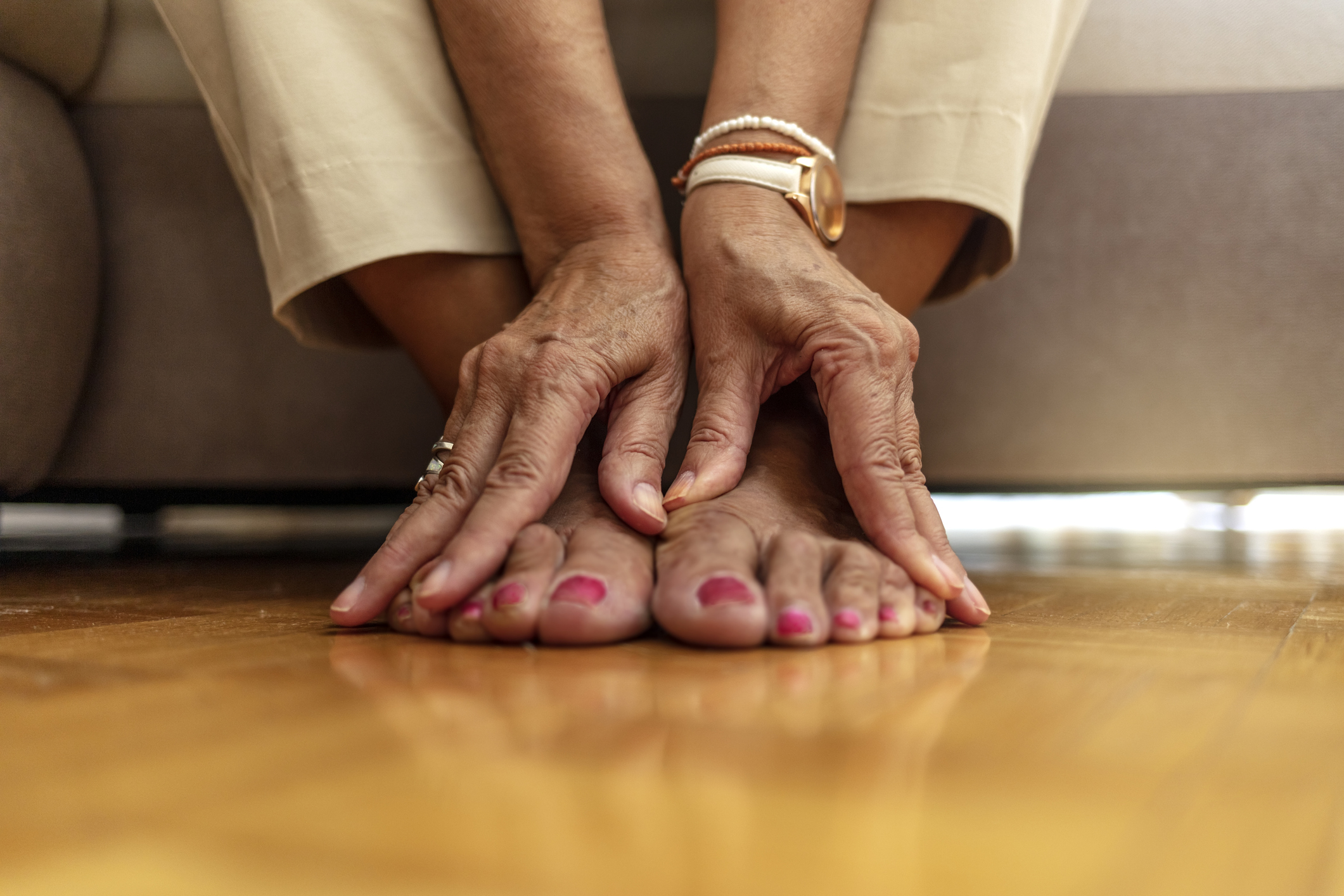
Improve senior foot health with tips from our professional home care experts.
It’s challenging to put your best foot forward when soreness wracks every step. Foot issues are common when we get older, which is understandable; there are so many delicate bones that carry our bodies’ weight. Not just that, because they are far away from the heart, our feet might not be getting as much oxygen-rich blood as required to stay healthy – particularly if a health condition like diabetes confines the flow of blood to the feet.
Yet many older adults opt to simply just grin (or grit their teeth) and bear it, instead of seeking assistance to improve senior foot health. This can result in not only increasing discomfort, but compromised mobility and balance issues. Difficulties with your feet can also be a red flag for other health issues that call for diagnosis and treatment.
Watch for These Common Senior Foot Problems
Foot pain might result from:
- Dry skin. Throughout the cold winter season, dry skin is prevalent. On the feet, it can cause cracks that are not just painful, but can lead to infection.
- Calluses and corns. These dense patches of dry skin on the feet often arise from the irritation from shoes that fit poorly.
- Bunions. As opposed to calluses and corns, bunions are the consequence of changes to bone structure. They may be extremely painful, frequently occurring on the exterior part of the big toe joint.
- Hammertoes. Instead of all the toes lying flat, hammertoes are misshapen and point upwards. You might discover a corn in conjunction with the deformed toe.
- Arthritis. Arthritis can strike any joints, even the feet, generating both pain and mobility issues.
- Plantar fasciitis. Plantar fasciitis is brought on by bony growths formed when a ligament on the heel becomes inflamed. Walking as well as standing can be extremely painful with this particular issue.
- Ingrown toenails. Toenails that grow at a different angle than normal can become ingrown in the skin of the toe, often requiring a surgical procedure to eliminate.
- Fungal infections. Wet feet make a great breeding ground for fungus that may occur between the toes.
Dr. Said Atway, clinical professor of podiatry at The Ohio State University Wexner Medical Center, treats seniors experiencing these types of issues on both ends of the spectrum: highly active and developing damage from excessive use, as well as people who have a less active lifestyle experiencing limited blood circulation to the feet and poor all around health. He highlights the significance of proper shoes for seniors, who should try to avoid going barefoot or wearing shoes with too little support, such as flip flops.
To find the best-fitting, most comfortable shoes, he recommends:
- Shoe shopping later in the day, as gravity causes the feet to swell a little during the day
- Testing out shoes by walking in them for at least 20 minutes; giving them a test run on a carpeted area at home should prevent any wear on the bottoms of the shoes, so they can be exchanged if uncomfortable
- Seeking the advice of a podiatrist on the best type of shoe for an older adult’s particular concerns
What other steps can you take to improve senior foot health? Keeping the feet clean, moisturized, and dry, and performing daily inspections to check for issues, is suggested for all older adults. An annual visit to the podiatrist can also help prevent problems.
Live Free Home Health Care, provider of award-winning home care in Plymouth, NH and the nearby areas, is here to help older people kick up their heels in a variety of ways: ensuring good foot hygiene, providing transportation to shop for footwear or to the podiatrist, taking regular walks together to boost blood circulation, and much more! Give us a call at 603-217-0149 for a cost-free in-home consultation today.
